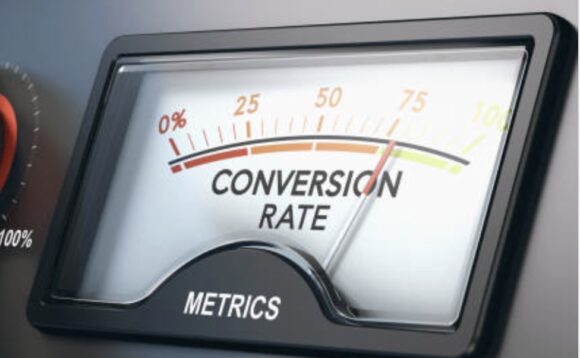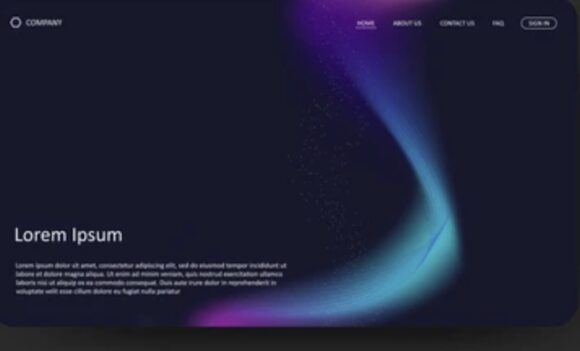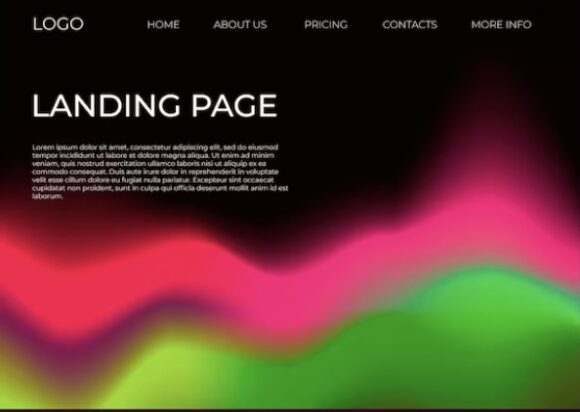When I first started exploring minimalistic landing page design trends, I loved the clean look. The sleek white space, subtle fonts, and just a button or two felt so modern and fresh. But after running real campaigns in fast-moving industries, I noticed a pattern: these minimal pages just didn’t convert the way I hoped.
Minimalism online looks classy, but in highly competitive markets, less isn’t always more. If your main goal is to drive conversions, a sparebones page can easily get lost in the noise, leaving visitors unsure, unconvinced, or simply uninterested.
This guide gets into why minimalist landing pages often fail in cutthroat markets, what gets missed with too simple designs, and how to turn things around while keeping that clean and modern vibe. I’ll share practical advice, backed by experience and current best practices, on how to improve landing page performance and actually get those signups, downloads, or sales you’re after.
Why Minimalistic Landing Pages Get So Popular
Minimalistic landing page design trends became popular for good reasons. Visitors don’t like clutter, nobody wants to be bombarded with banners and popups, and a focused message helps people know what action to take. Plus, minimal designs load fast and look great on any device.
Benefits of Minimalist Landing Pages:
- Quick loading, even on slow connections
- Looks sleek, modern, and professional
- Keeps the message clear (when done right)
- Better for simple offers or single focus products
With all these upsides, it makes sense that businesses jumped on the minimalism bandwagon. But when selling in a crowded niche or with complex offers, minimalism just doesn’t cut it. Here’s where things start falling short.
Why Do Minimalist Landing Pages Fail in Competitive Markets?
The trouble becomes obvious fast if you’re up against competitors with big budgets or persuasive messaging. If visitors have a dozen tabs open and every brand wants their attention, a super minimal page can seem unfinished, untrustworthy, or just not persuasive enough.
Lack of Trust & Authority Signals
A common issue: minimalistic landing pages skip social proof, trust badges, client logos, or even testimonials. In competitive markets, buyers want reassurance. Without these authority signals, they might think your offer lacks credibility or, worse, is a scam.
Not Enough Info to Overcome Objections
People need more content to feel confident. Minimal pages often cut details like FAQs, feature breakdowns, transparent pricing, or case studies. Without this info, it’s tough to answer those hesitant questions visitors have (“Will this work for me?” “Is it worth the investment?”), so they bounce away.
Forgettable or Unclear Messaging
Minimalism can easily cross into vagueness. If your headline is a generic one-liner and there’s only a button, visitors are left guessing what they’re getting or why it matters. In packed niches, you have just seconds to stand out, so leaving things too open-ended makes you blend in or vanish altogether.
Why Landing Pages Need More Content (Especially Now)
You may have heard that people “don’t read online,” but the truth is, people skim until they find info that connects with their pain points. Modern buyers want to self-educate before making a choice, especially online where trust is thin.
What Content Helps Conversions?
- Clear Value Propositions: Why is your offer better than the next?
- Benefitdriven sections: Not just features, but what’s in it for the visitor?
- Quick answers to objections: Address shipping, guarantees, time to value, or “why you?” on the page itself.
- Social proof: Real testimonials or trust icons add instant credibility.
- How it works visuals: Simple graphics or a stepbystep explain what words might miss.
If you cut these out for the sake of minimalism, you miss out on prime chances to persuade a hesitant visitor. That’s why minimalist landing pages flop: there just isn’t enough info to give someone a reason to say yes.
Minimalist Landing Page Conversion Strategies (That Actually Work)
Sticking to minimalism is totally doable—you just need to be strategic about what makes the cut. The goal is a clean design without cutting what’s critical for conversions.
Add Content with UX In Mind
Minimal doesn’t mean empty. You can add collapsible FAQ sections, expandable tabs for features, or subtle icons for social proof. These give substance without clutter.
Test Your Offers Above the Fold
It helps to show major value points and proof right up front. Try a short testimonial, a trust badge, or a 3point benefit summary just after your headline. Visitors shouldn’t need to scroll to get reasons to believe you’re legit.
Make CTAs ContextSmart
Instead of one “Buy Now” button, include smaller, contextspecific calls to action—think “See Features,” “Watch a Demo,” or “Start Free Trial”—that appear at natural points as visitors scroll. This smooths the way for people to take the next step once they’re convinced.
Common Mistakes with Minimalistic Landing Pages
Minimalism sometimes backfires because designers or marketers focus more on trends than on conversion best practices. Here are mistakes I see again and again:
- Too little copy: No real story, benefits, or answers for visitors with different needs
- Unclear headline: Abstract hero text that doesn’t quickly explain the offer
- No visual hooks: Just text and a button; nothing to grab attention
- Hidden navigation or exits: Trapping users leads to higher bounce rates
- Missing credibility signals: No trust guarantees, reviews, or partner logos
Why Do These Mistakes Happen?
It’s easy to fall for the “less is more” mantra. But sometimes “less” just means missing info. Minimalist landing page conversion strategies that skip substance for style will tank conversions, especially in busy verticals like SaaS, finance, or ecommerce.
How to Improve Landing Page Performance (Without Losing the Clean Look)
Balance is everything. I’ve seen small tweaks bring in way more conversions while still sticking to a minimal look. Here’s how you can make minimalist landing pages work in your favor:
1. Prioritize Core Info
- Share one main message but support it with extra benefits right under the headline.
- Address the top objections—add a “Why Choose Us?” or short FAQ section near the top.
2. Use Smart Visuals
- Swap walls of text for icons, process graphics, or simple images to make info clear at a glance.
- Include a client logo bar for fast authority.
3. Amp Up Social Proof
- Drop in a real testimonial (even just initials and location help).
- Trust badges like SSL, guarantees, or recognitions can boost trust quickly.
4. Guide with Sections, Not Long Pages
- Break up info using short, skimmable sections. White space is about not overwhelming people, not leaving things empty.
5. Iterate and Test
- Use heatmaps or analytics tools to see where visitors stop or drop off.
- Test tweaks in CTA copy, info order, or proof placement and see what gets results.
Practical Examples: When Minimalism Works (and When It Flops)
Sometimes, less really is more, especially for simple offers—think a free newsletter signup or a single product with broad appeal. But when your visitors need to compare or be convinced, going minimalist can hurt more than help.
Example 1: Simple Free Ebook Download
A minimal page with a small form and one clear benefit can work well if your audience is already interested and just needs a simple nudge.
Example 2: HighTicket SaaS or Agency Offer
If you’re asking for a $500 subscription or a highvalue meeting, visitors want more peace of mind. Skipping social proof, case studies, or explaining what makes you different leaves too many gaps and unanswered questions.
Answering Visitor Questions is Super Important
Think about your own buying behavior. If a landing page has you asking, “What does this really do?” or “Who else trusts them?” you’ll probably click away. Minimalistic design should never block visitors from finding the confidence or the details they need.
What Matters Most for Competitive Markets?
- Clear, direct headline that matches user intent
- Instant supporting proof (reviews, certifications, logos)
- Benefitdriven copy that’s easy to scan—not just slogans, but strong reasons to act
- Visual signals about how it works or what happens next
- No vague next steps or hidden fees
Frequently Asked Questions About Minimalist Landing Pages
Do minimalistic landing page design trends work for every industry?
Minimalism works best for industries where buyers are already familiar with the offer and the risk is low, like newsletter signups, free tools, or pre-sold traffic. In competitive B2B or ecommerce, you’ll need more proof and content to win the click.
How much information is too much?
It’s not about word count, but about relevance. If analytics show people dropping off, that’s a clue your info isn’t answering real questions. Prioritize quality, making each section serve a real purpose.
Can you start with minimalism and build up?
For sure. Begin clean, then add sections your audience actually uses. Analytics and heatmaps will show you where users want more guidance.
Actionable Steps for High-Conversion Landing Pages
- Write a headline that’s specific and directly matches what visitors are seeking.
- Add a short benefit summary and instant social proof right at the top.
- Drop in two or three skimmable sections below the fold: “How It Works,” “Why Choose Us,” and a quick FAQ that handles common objections.
- Break up copy with visuals like icons or a short explainer image.
- Test your page—watch where visitors pause or click away, and adjust your content or calls to action from there.
By embracing the clean look of minimalism, but supporting it with just enough content and proof, you can build landing pages that pop for the right reasons—even in the busiest markets. If you’re working on your own conversions, try sprinkling in a bit more critical info and tracking the results. The change can be dramatic.
In a competitive online world, the perfect landing page balances simplicity with persuasion, letting your message shine but always giving visitors enough to say yes.








